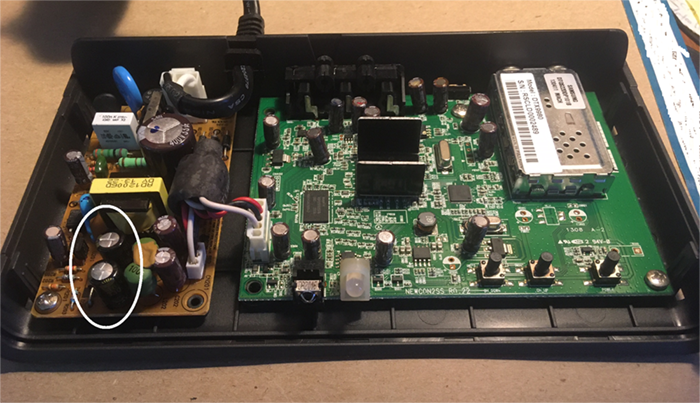Mandating a “right to repair” seems like a good idea, but what are the details and risks?
As an engineer, I like to fix things, or at least try to. That’s why I have been following the “right to repair” (RTR) movement, which is getting a lot of attention these days (just Google it and you’ll see). There are legislative efforts underway as well as administrative regulations being put in place to ensure that products are repairable – at least to some extent – by their purchasers over some number of years. Most media coverage of the RTR effort has been favorable, such as the ones cited in the References; when manufacturers object – as car dealers have done vigorously – these are usually portrayed as mostly self-serving objections (which is true to a large extent, of course).
So what is RTR? There’s no single definition, as it depends on where the product is sold and who is buying it as well as other factors. In some cases, it means that manufacturers must provide public access to relevant repair-related information for a nominal fee. This may include parts lists and assembly/disassembly information; it may mean ensuring availability of spare parts for some number of years or even a bill of materials (BOM) and schematics.
There’s a strong argument for RTR, no doubt. In the most obvious case, you’d like to have the option of bringing your car to an independent repair shop instead of a dealer because of price, comfort, location, or other factors, despite all of its high-tech electronics. RTR advocates point to cases where farmers had to wait days for an authorized dealer’s mechanic to come and repair their super-expensive farm equipment (several hundred thousand dollars) while crops had to be planted or harvested, and every down-time day counts.
This seems to make sense. But there’s also a legitimate argument about how much should be repairable or even accessible to an outside third party. Should an independent repair person be allowed to make changes to the software? Can they flash an operating algorithm into that tractor/combine, which perhaps improves performance but also stresses components beyond their design limits? How do you “bound” the scope of the allowed repairs?
[Don’t think that making unauthorized changes voids the warranty or protects the manufacturer, despite any warnings to the contrary. There have been cases where users made unauthorized and unapproved changes to equipment, were subsequently injured, sued, and won. The courts ruled that the manufacturer should have anticipated that users would attempt such changes and should have somehow protected against them.]What I’d really like to see is simpler access to replaceable parts and ease of actually doing the replacement. For example, I have a three-year-old handheld vacuum cleaner (Black & Decker Dustbuster HHVI320JR) powered by a lithium battery pack that won’t hold much charge anymore (Figure 1). Since the power pack uses the common 18650-size cells, replacing either the batteries individually or the battery pack should be an easy task – but it’s not.

The pack – once you disassemble the Dustbuster to get to it – has a conformal wrapping around the cells rather than an open/shut clamshell or slide-in case. Further, the batteries in the assembly are spot-welded with connecting tabs which means there is no convenient way to connect them once I extricate and replace the defunct ones, as explained in this short and helpful video “Repairable: Can You Replace the Batteries in a Black + Decker Lithium Dustbuster Vacuum Cleaner?” I’ll likely still make the effort to swap out the batteries when I have a chance, as engineering pride prevents me from tossing an otherwise lightly used and functional $50 appliance because of degraded batteries.
It’s not always the battery pack that is a problem. In many cases, the root cause of failure in many AC-powered consumer products and some commercial ones is that the electrolytic capacitors used for filtering the power supply, typically on the order of 100 µF, have failed. (These are often referred to as “bulk” capacitors due to their relatively high farad value compared to the far-smaller bypass and timing capacitors.) They may have been cheap, low-quality ones to begin with, or even counterfeit ones that got into the supply chain; capacitors that will work for a while are easy to fake.
I have two examples:
1) I have a digital/analog TV-converter box ($50) which I still use with an old but functioning CRT TV (clearly, I’m too attached to my circa-1996 TV – I’ll confess to it) (Figure 2). Over the past eight or so years, the filter capacitors in this unit have failed twice.

The RF-side PC board is tight as you’d expect (right side), but the separate board for the AC/DC supply is larger-scale, single-sided phenolic (left side, and yes, such low-cost boards are widely used in consumers products). Replacement of the capacitors required just modest care and attention (Figure 3).

2) On the much-simpler side, I have an inexpensive ($15) AC-powered large-LED clock, about five or six years old, where the digit segments were uneven and getting dimmer (Figure 4). At first, I assumed the LEDs were aging, as will eventually happen.

However, I also noticed that all the segments were somewhat dimmer as more segments were “on” and there was also a persistent low-rate flicker. This led me to a more-likely diagnosis: the bulk-filtering electrolytic capacitors were aging out; obviously, this clock unit is on 24/7, which means the supply is always delivering at least its typical current and sometimes its maximum or nearly so.
Instead of throwing it out and getting a new one, I figured I’d try a fix. Fortunately, this unit was easy to open, and after I removed the AC-safety insulation barrier, the capacitors were exposed on the single PC board. I replaced them ($4), and the clock worked fine, now with LED segments that are nice, even, and bright. The real challenge was to be very careful in replacing the insulation barrier and get it “just right” as it’s an AC-line subcircuit.
Obviously, neither of my capacitor-replacement repairs is practical for the average consumer. They require time, experience, and some skill to open the enclosure, unsolder the capacitors, and install new ones. To make them consumer- or repair-shop friendly might require socketed components, or affirmation that higher-quality components were used?
These examples illustrate my RTR dilemma. Do these units qualify for RTR support? If so, in what way? While I support RTR in principle, I see so many practical issues that I have misgivings. Who decides what a suitable level of vendor support is, what must be RTR-compliant, with what resources, and to what extent? Would it be bureaucrats? Engineers? A review panel? Vendor self-certified?
With respect to design, would glued-together rather than screwed clamshell enclosures be banned, with only some exceptions? Would products need an RTR “certification tests” similar to those required for many regulator mandates and standards for basic safety, EMI/RFI, and other performance aspects? How long would RTR be required?
As they say, the “devil is in the details”, and the road to misery may be paved with good intentions, and the “law of unintended consequences” is always hovering nearby. That’s why the whole RTR issue has me arguing with myself!
Related EE World Content
- Thermal/visible microscope handles PCB repairs
- Test instruments that aid PCB repair tasks
- Avoiding electrical hazards in the lab and repair shop
References
- The Wall Street Journal, June 1, 2021, “Spare Parts, Fix-It-Yourself Guides Hit the Market as Brands Ponder Repairability”
- The Wall Street Journal, August 30, 2021, “How the ‘Right to Repair’ Might Save Your Gadgets—and Save You Money”
- IEEE Spectrum, August 2021, “Europe Champions the Right to Repair”
- IEEE Spectrum, March 2020, “What the Right To Repair Movement Gets Wrong”







I’ve repaired several devices, usually resulting from failed capacitors. For example, a computer monitor, VCR/DVD recorder, and HP 34401A DMM. When an LCD TV failed, I looked for a failed cap but nothing was visible. I was just as happy to lose the TV anyway. We never used it and save $10/month by renting one less cable box.